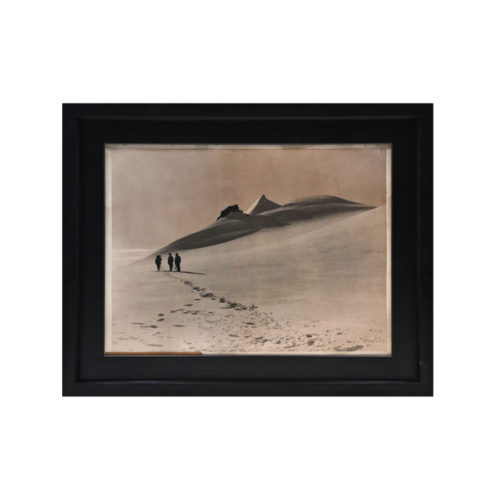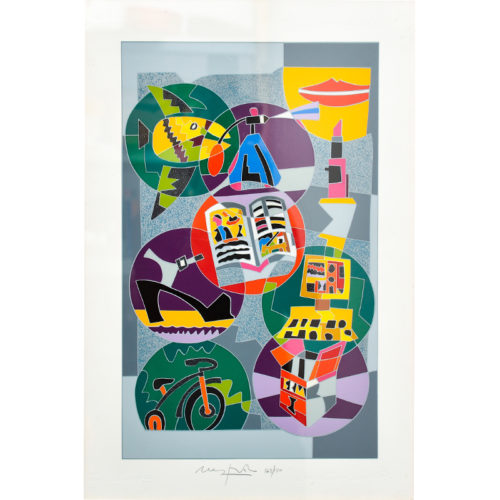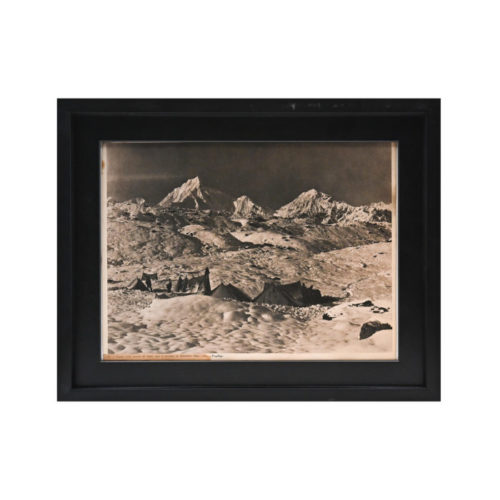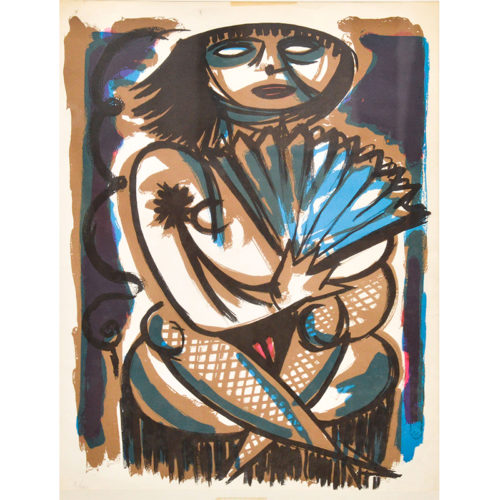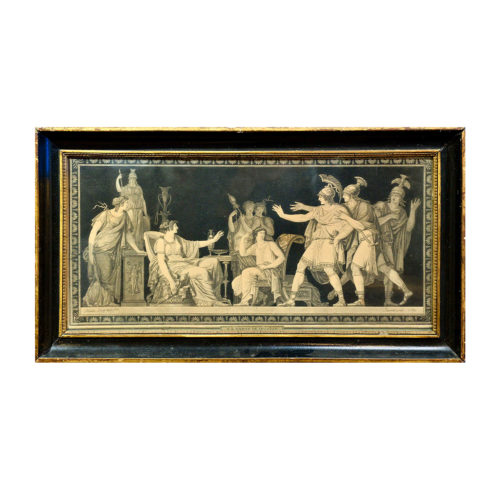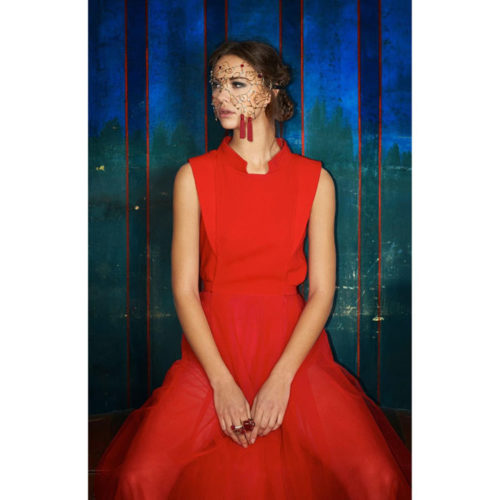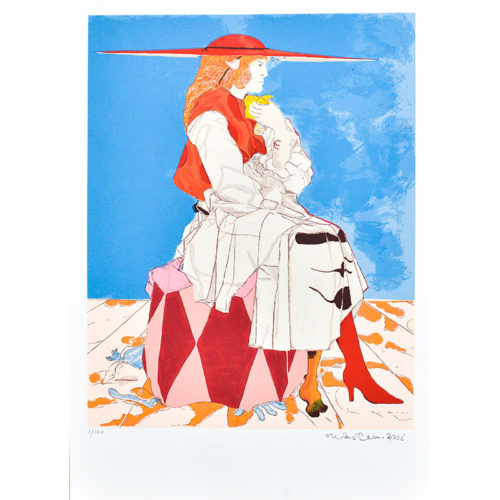"Dali - De Draeger" catalogue by Max Gérard, 1968.
The catalogue has a drawing of Don Quixote, with a dedication on the guard paper, a gift from the Catalan artist Salvador Dali (Figueras 1904 - 1989)
"Every morning, as I wake up, I experience a supreme pleasure that I am discovering today for the first time: that of being Salvador Dali, and I wonder, filled with wonder, what this Salvador Dali will do again today that is so prodigious. And every day it is more difficult for me to understand how others can live without being Gala or Salvador Dali.
A Catalan with a thirst for gold and glory, Dali painted a lot and talked a lot. His favourite subject: how to become a genius. His conclusion: 'Oh, Salvador, now you know, if you play at being a genius, you will become one!
Salvador Dali's taste for provocation, excessive character, pursuit of paradox and exaggerated egocentricity have made him a well-known figure to the general public. These elements have helped to turn a great artist - endowed with a fervid creative intelligence and a profound knowledge of the history of the arts, the masters of the past and the literary research of his time - into a myth, which still arouses great curiosity today.
However, his continuous exposure as an absolute 'genius' of art, to critics and to the judgement of the public, has given the impression of being able to fully understand his work and easily enter into his thought. In reality, his entire oeuvre reveals a very complex personality.
Like his compatriot Picasso, Dali experimented with different expressive languages during his long career, moving away from painting towards cinema, theatre, photography and even performance.
"At the age of six I wanted to be a cook. At seven I wanted to be Napoleon. And my ambition has been steadily growing ever since".
Dali's life and work are inextricably intertwined, in fact many events in the artist's life were reflected in his creations, and many paintings can only be understood on the basis of the events that marked his life.
At the age of six he painted his first canvas. Then, at the age of ten, he received his first drawing lesson, under the guidance of the famous Impressionist painter Ramón Pichot (1872 - 1925). He would later say that he was influenced by Pichot's works, which represented his first contact with a non-academic artistic current, focused on the reality of his time. At the age of fourteen he discovered the pompiers, at twenty-two cubism and at twenty-four he was already Dali, convinced that he had been called Salvador because he was destined to be the "saviour" of painting threatened with death by abstract art, academic surrealism, Dadaism in general and all the anarchic isms. At the age of 25, he was already winning over critics, doing business with gallery owners and collecting scandals.
Period: 1968
Measurements: Page size with drawing and dedication H 30 x W 27.5 cm
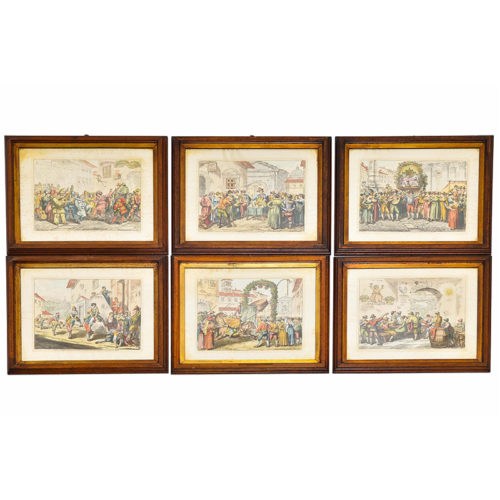 Group of 6 prints depicting the carnival in Rome by Bartolomeo Pinelli (Rome, 20 November 1781 - Rome, 1 April 1835). He was an Italian engraver, painter and ceramist. Extremely prolific graphic artist, it has recently been estimated that he produced about four thousand engravings and ten thousand drawings. In his prints he illustrated the customs of the Italian peoples, the great masterpieces of literature: Virgil, Dante, Tasso, Ariosto, Cervantes, Manzoni, and subjects of Roman, Greek, Napoleonic history etc. The most common theme in general is Rome, its inhabitants, its monuments, the ancient city and the one that is contemporary to him. The well-known portrait painter Giuseppe Tominz from Gorizia had among his students. In addition to its intrinsic artistic value, his illustrator work has significant documentary significance for the ethnography of Rome, Italy and Switzerland.Period: 1940s Measurements: In frame H 49 x L 60 / Prints H 40 x L 51 cm
Group of 6 prints depicting the carnival in Rome by Bartolomeo Pinelli (Rome, 20 November 1781 - Rome, 1 April 1835). He was an Italian engraver, painter and ceramist. Extremely prolific graphic artist, it has recently been estimated that he produced about four thousand engravings and ten thousand drawings. In his prints he illustrated the customs of the Italian peoples, the great masterpieces of literature: Virgil, Dante, Tasso, Ariosto, Cervantes, Manzoni, and subjects of Roman, Greek, Napoleonic history etc. The most common theme in general is Rome, its inhabitants, its monuments, the ancient city and the one that is contemporary to him. The well-known portrait painter Giuseppe Tominz from Gorizia had among his students. In addition to its intrinsic artistic value, his illustrator work has significant documentary significance for the ethnography of Rome, Italy and Switzerland.Period: 1940s Measurements: In frame H 49 x L 60 / Prints H 40 x L 51 cm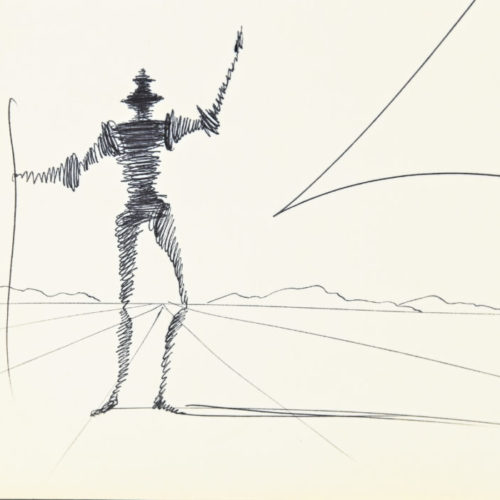 "Dali - De Draeger" catalogue by Max Gérard, 1968. The catalogue has a drawing of Don Quixote, with a dedication on the guard paper, a gift from the Catalan artist Salvador Dali (Figueras 1904 - 1989) "Every morning, as I wake up, I experience a supreme pleasure that I am discovering today for the first time: that of being Salvador Dali, and I wonder, filled with wonder, what this Salvador Dali will do again today that is so prodigious. And every day it is more difficult for me to understand how others can live without being Gala or Salvador Dali. A Catalan with a thirst for gold and glory, Dali painted a lot and talked a lot. His favourite subject: how to become a genius. His conclusion: 'Oh, Salvador, now you know, if you play at being a genius, you will become one! Salvador Dali's taste for provocation, excessive character, pursuit of paradox and exaggerated egocentricity have made him a well-known figure to the general public. These elements have helped to turn a great artist - endowed with a fervid creative intelligence and a profound knowledge of the history of the arts, the masters of the past and the literary research of his time - into a myth, which still arouses great curiosity today. However, his continuous exposure as an absolute 'genius' of art, to critics and to the judgement of the public, has given the impression of being able to fully understand his work and easily enter into his thought. In reality, his entire oeuvre reveals a very complex personality. Like his compatriot Picasso, Dali experimented with different expressive languages during his long career, moving away from painting towards cinema, theatre, photography and even performance. "At the age of six I wanted to be a cook. At seven I wanted to be Napoleon. And my ambition has been steadily growing ever since". Dali's life and work are inextricably intertwined, in fact many events in the artist's life were reflected in his creations, and many paintings can only be understood on the basis of the events that marked his life. At the age of six he painted his first canvas. Then, at the age of ten, he received his first drawing lesson, under the guidance of the famous Impressionist painter Ramón Pichot (1872 - 1925). He would later say that he was influenced by Pichot's works, which represented his first contact with a non-academic artistic current, focused on the reality of his time. At the age of fourteen he discovered the pompiers, at twenty-two cubism and at twenty-four he was already Dali, convinced that he had been called Salvador because he was destined to be the "saviour" of painting threatened with death by abstract art, academic surrealism, Dadaism in general and all the anarchic isms. At the age of 25, he was already winning over critics, doing business with gallery owners and collecting scandals. Period: 1968 Measurements: Page size with drawing and dedication H 30 x W 27.5 cm
"Dali - De Draeger" catalogue by Max Gérard, 1968. The catalogue has a drawing of Don Quixote, with a dedication on the guard paper, a gift from the Catalan artist Salvador Dali (Figueras 1904 - 1989) "Every morning, as I wake up, I experience a supreme pleasure that I am discovering today for the first time: that of being Salvador Dali, and I wonder, filled with wonder, what this Salvador Dali will do again today that is so prodigious. And every day it is more difficult for me to understand how others can live without being Gala or Salvador Dali. A Catalan with a thirst for gold and glory, Dali painted a lot and talked a lot. His favourite subject: how to become a genius. His conclusion: 'Oh, Salvador, now you know, if you play at being a genius, you will become one! Salvador Dali's taste for provocation, excessive character, pursuit of paradox and exaggerated egocentricity have made him a well-known figure to the general public. These elements have helped to turn a great artist - endowed with a fervid creative intelligence and a profound knowledge of the history of the arts, the masters of the past and the literary research of his time - into a myth, which still arouses great curiosity today. However, his continuous exposure as an absolute 'genius' of art, to critics and to the judgement of the public, has given the impression of being able to fully understand his work and easily enter into his thought. In reality, his entire oeuvre reveals a very complex personality. Like his compatriot Picasso, Dali experimented with different expressive languages during his long career, moving away from painting towards cinema, theatre, photography and even performance. "At the age of six I wanted to be a cook. At seven I wanted to be Napoleon. And my ambition has been steadily growing ever since". Dali's life and work are inextricably intertwined, in fact many events in the artist's life were reflected in his creations, and many paintings can only be understood on the basis of the events that marked his life. At the age of six he painted his first canvas. Then, at the age of ten, he received his first drawing lesson, under the guidance of the famous Impressionist painter Ramón Pichot (1872 - 1925). He would later say that he was influenced by Pichot's works, which represented his first contact with a non-academic artistic current, focused on the reality of his time. At the age of fourteen he discovered the pompiers, at twenty-two cubism and at twenty-four he was already Dali, convinced that he had been called Salvador because he was destined to be the "saviour" of painting threatened with death by abstract art, academic surrealism, Dadaism in general and all the anarchic isms. At the age of 25, he was already winning over critics, doing business with gallery owners and collecting scandals. Period: 1968 Measurements: Page size with drawing and dedication H 30 x W 27.5 cm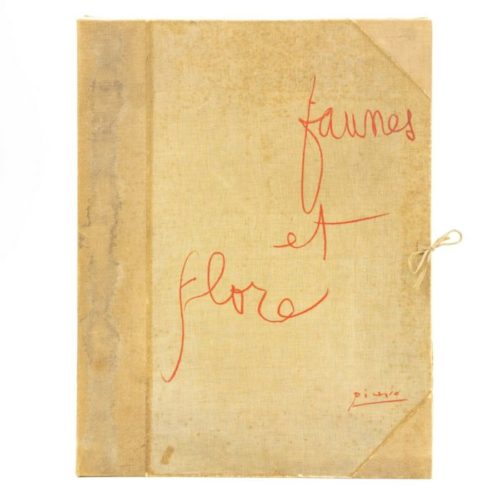 "Faunes et Flore d'Antibes" - Edition 46/175 - "Au Pont des Arts". Original album from 1960, containing 7 colour lithographs. Printed by Daniel Jacomet under the supervision of Picasso, Paris. Introduction by Jaime Sabartes, New York Graphic Society - Au Pont Des Arts, Paris, 1960. The Portfolio reproduces 7 paintings on paper by Pablo Picasso, from the series: "La joie de vivre", Antibes August/September 1946, plus the frontispiece that was specially designed by Picasso for this edition. Printed on paper marked Arches and preserved in the original linen folder. The prints are reproduced in the original format of the paintings, and the dimensions of the folder are: H 65 x W 50 cm. The linen folder and the prints are in very good condition. One hundred and seventy-five numbered copies, this being 46 of 175. Period: 1960 Measurements: H 65 x W 50 cm
"Faunes et Flore d'Antibes" - Edition 46/175 - "Au Pont des Arts". Original album from 1960, containing 7 colour lithographs. Printed by Daniel Jacomet under the supervision of Picasso, Paris. Introduction by Jaime Sabartes, New York Graphic Society - Au Pont Des Arts, Paris, 1960. The Portfolio reproduces 7 paintings on paper by Pablo Picasso, from the series: "La joie de vivre", Antibes August/September 1946, plus the frontispiece that was specially designed by Picasso for this edition. Printed on paper marked Arches and preserved in the original linen folder. The prints are reproduced in the original format of the paintings, and the dimensions of the folder are: H 65 x W 50 cm. The linen folder and the prints are in very good condition. One hundred and seventy-five numbered copies, this being 46 of 175. Period: 1960 Measurements: H 65 x W 50 cm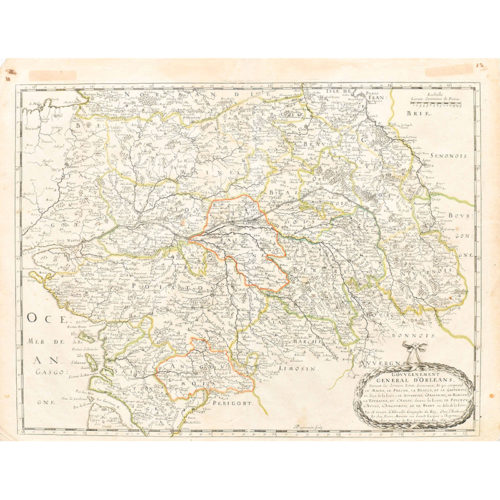 Beautiful example of the engraved map of Nicolas Sanson d'Abbeville from 1650. Nicolas Sanson (1600-1667), sometimes called Nicolas Sanson d'Abbeville or Sanson d'Abbeville, was the most important French cartographer of the 17th century. Tooley called Sanson "the founder of the French school of cartography". He started making cards at the end of 1620, and in 1630 he worked with Melchior Tavernier. Subsequently, Sanson worked in concert with the publisher Pierre Mariette, with whom he published his great atlas: general maps of all parts of the world (1658). After Sanson's death in 1667, his son Guillaume ran the business in collaboration with Alexis Hubert Jaillot. Guillaume has established himself as a full-fledged very important French cartographer.Period: 1650 Measurements: In frame H 65 X L 79 / Paper H 44 X L 56 cm
Beautiful example of the engraved map of Nicolas Sanson d'Abbeville from 1650. Nicolas Sanson (1600-1667), sometimes called Nicolas Sanson d'Abbeville or Sanson d'Abbeville, was the most important French cartographer of the 17th century. Tooley called Sanson "the founder of the French school of cartography". He started making cards at the end of 1620, and in 1630 he worked with Melchior Tavernier. Subsequently, Sanson worked in concert with the publisher Pierre Mariette, with whom he published his great atlas: general maps of all parts of the world (1658). After Sanson's death in 1667, his son Guillaume ran the business in collaboration with Alexis Hubert Jaillot. Guillaume has established himself as a full-fledged very important French cartographer.Period: 1650 Measurements: In frame H 65 X L 79 / Paper H 44 X L 56 cm